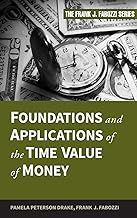Summary of "Time value of money | Interest and debt | Finance & Capital Markets | Khan Academy"
Summary of the Video: “Time value of money | Interest and debt | Finance & Capital Markets | Khan Academy”
Main Ideas and Concepts
-
Time Value of Money (TVM): Money available now is worth more than the same amount in the future due to its potential earning capacity through interest. Both the amount and timing of receiving or paying money are important.
-
Interest Rate Assumption: The video uses a simplified, guaranteed risk-free interest rate of 10% per year. This rate is higher than typical historical rates but makes calculations easier to follow.
-
Comparing Monetary Options at Different Times:
- Receiving $100 now is more valuable than receiving $109 in one year or $120 in two years.
- Investing $100 now at 10% grows to $110 in one year and $121 in two years.
-
This illustrates that nominal amounts alone are insufficient; timing and opportunity cost (interest foregone) must be considered.
-
Present Value (PV) and Future Value (FV):
- Future Value (FV): The amount money will grow to in the future given a certain interest rate. Example: $100 invested at 10% for 1 year becomes $110; for 2 years becomes $121.
-
Present Value (PV): The current worth of a future sum of money, discounted at the risk-free interest rate. Example: The present value of $121 two years from now at 10% interest is $100.
-
Calculating Present Value:
- Formula:
[
PV = \frac{FV}{(1 + r)^n}
]
where:
- (FV) = future value
- (r) = interest rate (10% or 0.10)
- (n) = number of years
- Example: Present value of $65 one year from now at 10% interest: [ PV = \frac{65}{1.1} = 59.09 ] This means $59.09 today invested at 10% will grow to $65 in one year.
Methodology / Step-by-Step Instructions for Calculations
-
To calculate Future Value (FV): [ FV = PV \times (1 + r)^n ] - Identify the present value (PV). - Identify the interest rate (r) per period. - Identify the number of periods (n). - Multiply PV by ((1 + r)^n).
-
To calculate Present Value (PV): [ PV = \frac{FV}{(1 + r)^n} ] - Identify the future value (FV). - Identify the interest rate (r) per period. - Identify the number of periods (n). - Divide FV by ((1 + r)^n).
-
Comparing monetary options at different times: - Convert all options to either present value or future value terms using the above formulas. - Choose the option with the highest present or future value depending on your preference.
-
Example calculation of PV for $65 one year from now at 10% interest: - Set up the equation: [ X \times 1.10 = 65 ] - Solve for (X): [ X = \frac{65}{1.10} = 59.09 ] - Interpretation: $59.09 today is equivalent to $65 one year from now at 10% interest.
Speakers / Sources Featured
- Narrator: The video is narrated by a Khan Academy instructor (likely Sal Khan or another Khan Academy educator), who explains the concepts with examples and simple math demonstrations.
Category
Educational
Share this summary
Featured Products




